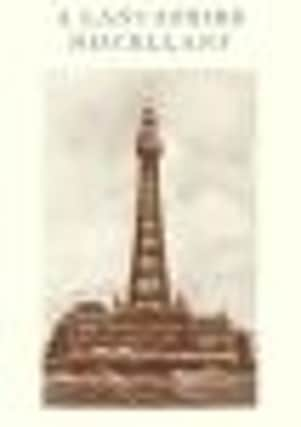Book review: A Lancashire Miscellany by Tom Holman


You won’t ‘drop cork-legged’ to learn that they are all in Lancashire, a county with one of the longest, most turbulent and fascinating histories in Britain.
No-one knows that better than author and journalist Tom Holman whose informative and entertaining romp through a treasure trove of Lancastrian gems would appear to have been a labour of love.
Advertisement
Hide AdAdvertisement
Hide AdHe lives in Lindale, near Grange-over-Sands, officially part of Cumbria since the massive boundary changes in 1974, but very much a part of the real Lancashire for the previous 800 years – as were many of the towns and villages mentioned in this cornucopia of knowledge.
We’re a proud lot in Lancashire and like to think we know our home county top to bottom and inside out, but this ‘gradely’ guide will reveal little-known facts and figures to keep you talking until ‘eawl- leet’.
Whether it’s the history of the flat cap, a rundown of the wackiest football mascots, information on the most haunted places or revelations about the home of giant plum puddings, there are plenty of rare titbits here for you to relish.
Take the county’s cherished red rose, it has a history as colourful and powerful as anything in English history.
Advertisement
Hide AdAdvertisement
Hide AdWhen King Henry VII won the Wars of the Roses in 1485, he symbolically united his red rose of Lancaster with the York white rose to create the Tudor rose, making sure, of course, that the red petals entirely surrounded the smaller white ones!
The county’s population has grown massively since Henry took the throne over 500 years ago and at the last census in 2001, about 1.1 million people were living here, with Blackpool the most densely populated area and the Ribble Valley the least densely populated.
Lancashire’s rich literary tradition has produced writers like the eminent historian A J P Taylor (Southport), Laurence Binyon, author of the famous For The Fallen used at Remembrance Day services (Lancaster) and poet Francis Thompson (Preston) as well as Prime Minsters Sir Robert Peel (Ramsbottom near Bury), William Gladstone (Liverpool) and David Lloyd George (born in Chorlton near Manchester before moving to Wales).
The county has also witnessed some of the country’s most extreme weather – hailstones ‘as big as apples’ at Ormskirk in 1662, an earthquake in Manchester in 1776 which set all the church bells ringing and a still-standing national record of 1.25ins (32mm) of rain in just five minutes in Preston in 1893.
Advertisement
Hide AdAdvertisement
Hide AdWe have produced our fair share of inventors as well, not least Lancaster-born palaeontologist Richard Owen (1804-1892) who coined the word ‘dinosaur’ and was one of the founders of the Natural History Museum in London.
Lancashire is also home to two of the country’s rare ‘Thankful Villages’ parishes to which all the men who set out to fight in the First World War returned alive. Located just five miles apart, Arkholme and Nether Kellet near Carnforth, sent around 80 men between them and all miraculously survived.
With sections on sport, dialect, food, industry, landscape and many, many more Lancashire Miscellany is a brilliant ‘hot-pot’ of meaty morsels full of the flavour of the Red Rose county and sure to suit all ‘Lanky’ tastes...
That’s a fact!
(Frances Lincoln, hardback, £9.99)